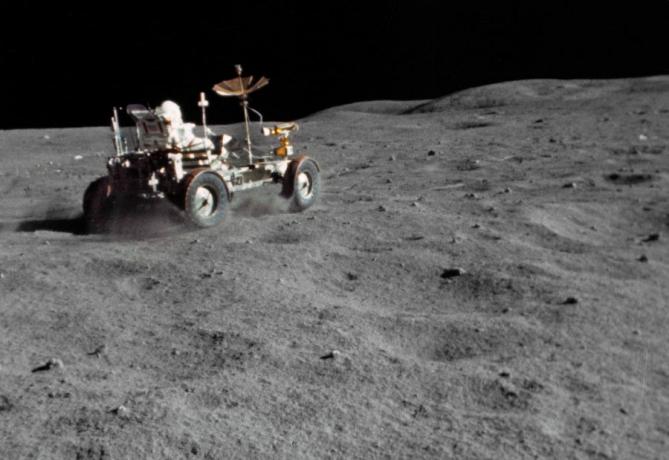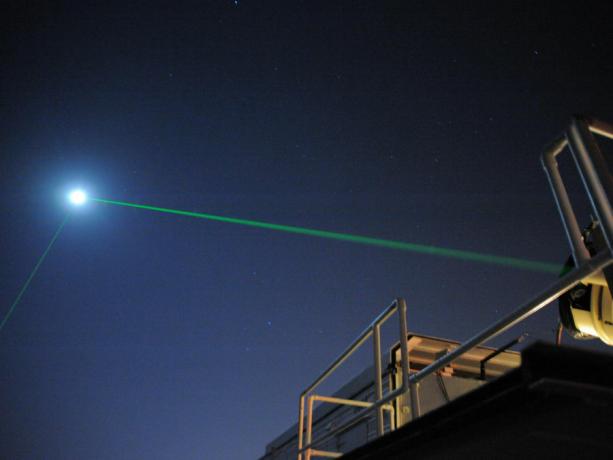Throughout human history, only 12 men have had the privilege of stepping on the moon surface. In all, 24 astronauts have been in lunar orbit, all as part of the six missionsApollo, that were carried out between the 60s and 70s. Such missions provided enormous scientific advances to humanity, among the most diverse fields of knowledge.
Man's search for the Moon ended up contributing to the development of new technologies in telecommunications, computing, and rocket propulsion. However, even today there are who doubts man's arrival on the moon. It's relatively common to hear people talking about theories that try to produce scientific evidence based on analysis of the more than 15,000 photos made available for free use by the self. National Aeronautics and Space Administration (NASA). In this article, we'll talk about some facts that reinforce the veracity of manned trips to the Moon.
See too: Why hasn't man returned to the moon yet?
1st fact: Footprints on the Moon
The footprints left on Earth usually last for a short time. This is because on our planet we are surrounded by a dense atmosphere which is in constant motion. In addition, the presence of this atmosphere leads to great climatic variations, responsible for the production of rain and wind, not to mention the direct influence of other living beings that can erase evidence capable of attesting that, someday, a human being has passed through some place from the earth.
Do not stop now... There's more after the advertising ;)
On the Moon, where there is no atmosphere, a footprint or trail will remain for hundreds or even thousands of years. So, if it were possible to observe the Moon's surface, we should be able to see the footprints left by astronauts. Fortunately, this is now possible thanks to the robotic spacecraft Lunar Reconnaissance Orbiter (LRO), launched by NASA in June 2009 and currently orbiting the Moon between 20 km and 165 km of height in relation to the lunar ground.
LRO has, since entering the Moon's orbit, been producing very high resolution photos, with the aim of to find mineral resources, such as water, as well as the landing sites for manned missions precedents.

Lunar Reconnaissance Orbiter it is an unmanned spacecraft that extracts various information from the Moon. (Image credits: NASA)
Some of the photos taken by LRO show the lunar module of eagle, the experiment LRRR – a retro-reflector, the PSEP – a seismometer, a camera and some objects discarded by the astronauts.

LRO's lenses allowed the site of the first moon landing (Moon landing) to be photographed 25 km high. (Image credits: NASA)
2nd fact: Lunar powder
At the time when images and videos of the Apollo missions were released, there were no computers like today's capable of analyzing the trajectory of dust particles that were ejected from the surface of the Moon by the steps of astronauts or even by the wheels of lunar vehicles (lunar rovers).

By studying the motion of the moon dust, it was possible to calculate the Moon's gravity. (Image credits: NASA)
With current technology, it is possible to see that the trajectory of the particles is perfectly parabolic, that is, the dust particles describe a trajectory that is predicted for the bodies that are cast obliquely at the vacuum, free from the action of any dissipative forces, such as the force of friction with air.
For something like this to be forged on Earth would require a huge vacuum chamber, bigger than any that had ever been built on our planet. In addition to this fact, through the height reached by the dust particles and the time they remain in the air, it is possible to determine which was the acceleration of gravity in place of the footage and the result is the same as that calculated for the Moon: about 1.62 m/s².
Using today's modern computer graphics technologies, it is possible to produce a video of this type, however, between 1969 and 1972 this type of technology was simply unthinkable.
Lookalso: Space race
3rd fact: Lunar Laser Ranging experiment (LRRR)
Astronauts from the Apollo 11, 14, and 15 missions installed mirrorsretro-reflectors High precision. These mirrors are capable of reflecting light back to its emitting source with great precision and with little loss. Through them, it is possible to emit several laser beams from different locations on Earth to measure the position of the Moon, for example.

The laser in the photo is being emitted towards the LRO and then reflected. (Image credits: NASA)
After the launch of the observation spacecraft LRO, The NASA went a little further, installing a device similar to the LRRR, in order to obtain more information about the Moon, such as its temperature during the day and night, as well as the lunar albedo (reflection capacity) for the frequencies of ultraviolet light.
Read too: Sputnik 1: The story of the first satellite to orbit Earth
4th fact: Moon Samples
In all manned missions to the Moon, many rock and lunar soil samples were brought to Earth. In 1971, two astronauts from the Apollo 14 mission brought a small rocklunar 800 g quite curious: this rock appeared to have been formed under conditions found on Earth, totally different from other samples brought from the Moon. This rock contained several traces of minerals that are abundant on our planet but very rare on the Moon.
An article produced by a group of geoscientists from the Swedish Natural History Museum, claims that it was detected in the sample the presence of minerals that are formed when there is the presence of water and oxygen, as well like pressure and temperature conditions that are common to Earth, but which are also impossible to meet on the Moon. These indications support the astronomical theory that the Moon possibly arose after a collision between Earth and a huge asteroid billions of years ago.
By Me. Rafael Helerbrock



